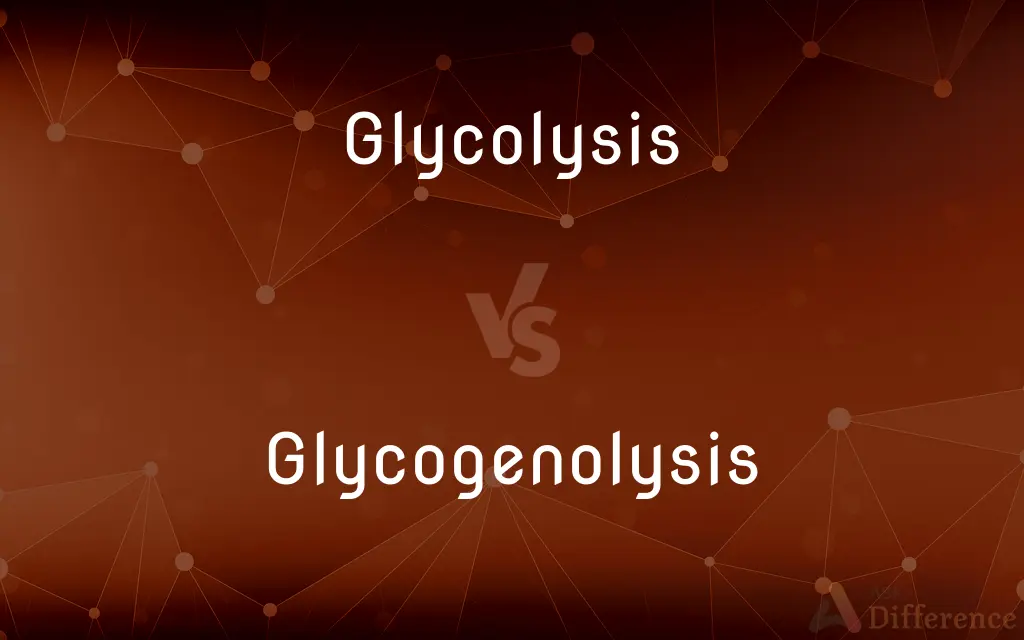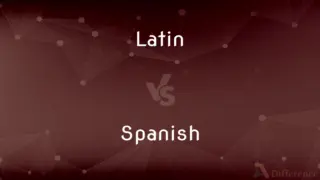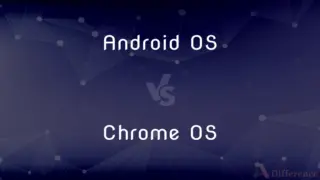Glycolysis vs. Glycogenolysis — What's the Difference?
By Maham Liaqat & Urooj Arif — Updated on March 15, 2024
Glycolysis is the process of breaking down glucose to produce energy, while glycogenolysis is the breakdown of glycogen into glucose for energy release.

Difference Between Glycolysis and Glycogenolysis
Table of Contents
ADVERTISEMENT
Key Differences
Glycolysis is a fundamental metabolic pathway that occurs in the cytoplasm of cells, where glucose is broken down into pyruvate, generating ATP (adenosine triphosphate) and NADH (nicotinamide adenine dinucleotide) as energy sources. On the other hand, glycogenolysis takes place primarily in the liver and muscle cells, where glycogen, a stored form of glucose, is converted back into glucose-1-phosphate and then into glucose-6-phosphate, eventually becoming free glucose. This process is essential for maintaining sugar levels during fasting or intense physical activity.
While glycolysis directly metabolizes glucose to produce energy, glycogenolysis mobilizes stored energy by converting glycogen reserves into glucose, which can then be used for energy production, including feeding into glycolysis. Glycolysis is a universal pathway present in nearly all organisms, reflecting its evolutionary importance, whereas glycogenolysis is specific to organisms that store glucose as glycogen.
Glycolysis produces a net gain of 2 ATP molecules per glucose molecule, alongside 2 molecules of NADH and 2 molecules of pyruvate. Glycogenolysis, in contrast, primarily serves to increase the availability of glucose in the bloodstream and does not directly produce ATP in the process; however, the glucose produced can undergo glycolysis or other metabolic pathways, leading to ATP production.
The regulation of glycolysis and glycogenolysis is tightly controlled by hormonal signals and cellular energy needs. Insulin promotes the storage of glucose as glycogen and the uptake of glucose into cells, enhancing glycolysis. Conversely, glucagon and adrenaline stimulate glycogenolysis to increase glucose levels during fasting or stress.
Glycolysis and glycogenolysis are interconnected through the glucose they either consume or produce. Both are critical for maintaining energy homeostasis in the body, with glycolysis providing a rapid source of ATP from glucose and glycogenolysis ensuring glucose availability during periods of high demand or low supply.
ADVERTISEMENT
Comparison Chart
Definition
The breakdown of glucose to produce ATP and pyruvate.
The breakdown of glycogen into glucose.
Location
Cytoplasm of cells.
Liver and muscle cells.
Oxygen Requirement
Anaerobic (does not require oxygen).
Does not require oxygen.
Main Products
ATP, NADH, and pyruvate.
Glucose.
Enzymes Involved
Hexokinase, phosphofructokinase, and pyruvate kinase.
Glycogen phosphorylase.
Energy Production
Produces 2 ATP molecules per glucose molecule.
Does not directly produce ATP but provides glucose for ATP production.
Regulation
Regulated by cellular energy needs and hormones like insulin.
Regulated by glucagon and adrenaline.
Compare with Definitions
Glycolysis
The metabolic pathway converting glucose into pyruvate, producing ATP.
Glycolysis is vital for cells lacking mitochondria.
Glycogenolysis
The process of breaking down glycogen into glucose.
Glycogenolysis in the liver prevents hypoglycemia during fasting.
Glycolysis
An anaerobic process providing energy under oxygen-limited conditions.
Muscle cells rely on glycolysis during intense exercise.
Glycogenolysis
Provides glucose for energy during high demand or low intake.
During a marathon, glycogenolysis supplies glucose to muscles.
Glycolysis
Begins with glucose and ends with pyruvate, ATP, and NADH.
The efficiency of glycolysis is crucial for fast energy needs.
Glycogenolysis
Occurs in response to hormonal signals like glucagon.
Glucagon triggers glycogenolysis to raise glucose levels.
Glycolysis
Involves ten enzymatic steps, each catalyzed by a specific enzyme.
Hexokinase initiates glycolysis by phosphorylating glucose.
Glycogenolysis
Involves the enzyme glycogen phosphorylase.
Glycogen phosphorylase is the key enzyme in glycogenolysis.
Glycolysis
Essential for energy production in all cells.
Even in the presence of oxygen, glycolysis is the cell's immediate energy source.
Glycogenolysis
Helps maintain glucose levels, especially between meals.
Post-exercise, glycogenolysis replenishes circulating glucose.
Glycolysis
Glycolysis is the metabolic pathway that converts glucose C6H12O6, into pyruvic acid, CH3COCOOH. The free energy released in this process is used to form the high-energy molecules adenosine triphosphate (ATP) and reduced nicotinamide adenine dinucleotide (NADH). Glycolysis is a sequence of ten reactions catalyzed by enzymes.
Glycogenolysis
Glycogenolysis is the breakdown of glycogen (n) to glucose-1-phosphate and glycogen (n-1). Glycogen branches are catabolized by the sequential removal of glucose monomers via phosphorolysis, by the enzyme glycogen phosphorylase.
Glycolysis
A metabolic process that occurs in nearly all living cells in which glucose is converted in a series of steps to pyruvic acid and during which energy is released in the form of ATP.
Glycogenolysis
The biochemical breakdown of glycogen to glucose.
Glycolysis
(biochemistry) The cellular degradation of the simple sugar glucose to yield pyruvic acid, and ATP as an energy source
Glycogenolysis
(biochemistry) The production of glucose-1-phosphate by splitting a glucose monomer from glycogen using inorganic phosphate
Glycolysis
A metabolic process that breaks down carbohydrates and sugars through a series of reactions to either pyruvic acid or lactic acid and release energy for the body in the form of ATP
Common Curiosities
Can glycolysis and glycogenolysis occur simultaneously?
Yes, they can occur simultaneously in different tissues, depending on the body's energy needs and glucose availability.
How are glycolysis and glycogenolysis different?
Glycolysis breaks down glucose to produce energy, while glycogenolysis breaks down glycogen into glucose for energy or to maintain glucose levels.
Why are both glycolysis and glycogenolysis important?
Both processes are essential for energy balance: glycolysis provides immediate energy from glucose, and glycogenolysis ensures glucose availability from stored glycogen.
Does glycogenolysis directly produce ATP?
No, glycogenolysis itself does not produce ATP but provides glucose that can be used in glycolysis or other pathways to generate ATP.
What is glycolysis?
Glycolysis is the metabolic process where glucose is broken down to produce ATP, NADH, and pyruvate, supplying cells with energy.
How do cells regulate glycolysis and glycogenolysis?
Cells regulate these processes through hormonal signals like insulin, glucagon, and adrenaline, based on the body's energy status and needs.
What is glycogenolysis?
Glycogenolysis is the breakdown of glycogen into glucose, crucial for maintaining glucose levels during fasting or physical exertion.
What happens to pyruvate after glycolysis?
Pyruvate can enter the mitochondria to be further metabolized in the Krebs cycle if oxygen is available, or be converted to lactate in anaerobic conditions.
What triggers glycogenolysis in the liver?
Glycogenolysis in the liver is triggered by glucagon and adrenaline, especially during fasting or stress, to increase blood glucose levels.
How does insulin affect glycolysis and glycogenolysis?
Insulin promotes glucose uptake and glycolysis in cells for energy production and stimulates glycogen synthesis, reducing glycogenolysis.
Share Your Discovery

Previous Comparison
Aim vs. Goal
Next Comparison
Latin vs. SpanishAuthor Spotlight
Written by
Maham LiaqatCo-written by
Urooj ArifUrooj is a skilled content writer at Ask Difference, known for her exceptional ability to simplify complex topics into engaging and informative content. With a passion for research and a flair for clear, concise writing, she consistently delivers articles that resonate with our diverse audience.















































